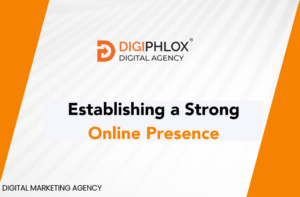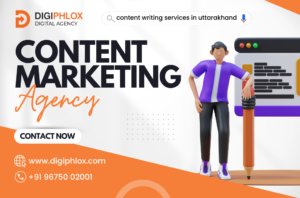As a business owner, you want to increase your revenue and drive more sales. One way to achieve this is through the use of Pay-Per-Click (PPC) advertising. PPC ads can be an effective tool to drive traffic to your website and increase sales. In this article, we’ll explore how to use PPC ads to drive sales and increase revenue.

In today’s highly competitive digital landscape, businesses are continually seeking new ways to attract potential customers and increase their revenue. One of the most effective strategies to drive sales is through Pay-Per-Click (PPC) advertising. PPC is a powerful marketing tool that allows businesses to target potential customers with highly specific ads, driving them to take action and boosting the business’s bottom line.
What is PPC Advertising?
PPC advertising is a model of digital marketing where businesses pay a fee each time someone clicks on one of their ads. Essentially, it’s a way of buying visits to your website, rather than trying to earn those visits organically.
PPC ads appear at the top of search engine results pages, social media platforms, and other websites. When a user clicks on the ad, they are directed to a landing page on your website. The goal of PPC advertising is to get as many clicks as possible and convert those clicks into sales.
Understanding PPC Advertising
PPC advertising is a model of online advertising where advertisers pay each time a user clicks on one of their ads. Essentially, businesses bid on keywords related to their products or services, and when users search for those keywords, their ads appear at the top of the search engine results page (SERP).
One of the primary benefits of PPC advertising is that businesses can reach their target audience instantly, unlike other digital marketing strategies, which can take months to gain traction. PPC ads can also be highly targeted, allowing businesses to reach potential customers based on a wide range of criteria, including location, interests, and demographics.
Setting Up Your PPC Campaign
You must set up a campaign before you can begin using PPC advertising. Selecting a platform is the first step. The most well-known PPC advertising platform is Google Ads, but there are others as well, including Bing Ads and Facebook Ads.
Once you’ve chosen your platform, you need to create your ad. This involves selecting the keywords you want to target, creating ad copy, and setting a budget. Your ad copy should be compelling and highlight the benefits of your product or service.
Next, you need to choose your target audience. This involves selecting factors such as location, age, gender, and interests. By targeting your ads to a specific audience, you can increase the likelihood that your ad will be clicked on by someone who is interested in your product or service.
Optimizing Your PPC Campaign
Once your campaign is up and running, you need to monitor and optimize it to ensure it’s as effective as possible. This involves analyzing the performance of your ads and making adjustments as necessary.
One way to optimize your PPC campaign is to use A/B testing. This involves creating two versions of your ad and testing them against each other to see which performs better. You can test different elements such as ad copy, images, and calls to action.
You should also analyze your campaign data to see which keywords and ads are performing best. This will allow you to adjust your bidding strategy and allocate more budget to high-performing keywords and ads.
Benefits of PPC Advertising
PPC advertising has several benefits for businesses looking to drive sales and increase revenue. Some of the principal benefits are as follows:
Targeted Advertising – PPC advertising allows you to target specific audiences based on factors such as location, age, and interests. This means that your ads are more likely to be seen by people who are interested in your product or service.
- Cost-Effective – PPC advertising can be a cost-effective way to drive traffic to your website. You only pay when someone clicks on your ad, so you’re not wasting money on ads that aren’t generating clicks.
- Measurable Results – With PPC advertising, you can track the performance of your ads and see how many clicks and conversions they are generating. This allows you to measure the ROI of your advertising efforts and make adjustments as necessary.
- Quick Results – Unlike organic search engine optimization (SEO), which can take months to see results, PPC advertising can generate results quickly. You can start seeing clicks and conversions within days of launching your campaign.
Identify Your Target Audience
Identifying your target audience is a crucial first step in any marketing or advertising campaign. The following steps can help you determine who your target market is:
Define your product or service: Start by defining what you offer and what problems you solve for your customers. This will help you understand who your target audience is and what their needs are.
- Analyze your existing customer base: Look at your current customer base and identify common characteristics such as age, gender, location, income, interests, and buying habits. This will give you a good starting point for understanding who your target audience is.
- Conduct market research: Use surveys, focus groups, or other forms of market research to gain a deeper understanding of your target audience. This can help you identify key pain points, motivations, and behaviors that you can use to tailor your marketing messages.
- Analyze your competitors: Look at your competitors and see who they are targeting. This can help you identify gaps in the market that you can fill by targeting a different audience.
- Create buyer personas: Based on the information you have gathered, create buyer personas that represent your ideal customers. These personas should include key demographic and psychographic information, as well as insights into their behaviors, motivations, and pain points.
Conclusion
In conclusion, PPC advertising can be an effective tool to drive sales and increase revenue. By setting up a PPC campaign, optimizing it, and monitoring its performance, you can increase the likelihood of converting clicks into sales. The benefits of PPC advertising include targeted advertising, cost-effectiveness, measurable results, and quick results. If you’re looking to increase your revenue, consider
If you’re ready to take your digital marketing to the next level, contact us today to learn how we can help you harness the power of PPC advertising.
I hope this article helped you to understand how to Use PPC Ads to Drive Sales and Increase Revenue.
Thank you for reading here, I hope you have liked this article and the article is related to your search. For digital marketing, web designing, SEO, SMM, and more related services contact with DigiPhlox









